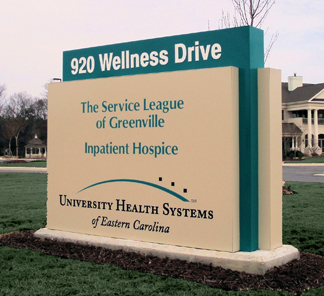Q&A: Healthcare Wayfinding
Randy Cooper, author of “Wayfinding for Healthcare: Best Practices for Today’s Facilities,” has more than 35 years of experience in the  healthcare wayfinding industry. Cooper is founder and president of Cooper Signage and Graphics Inc.,, an Atlanta-based wayfinding consultancy and signage design firm. Over the last 27 years with CS&G, Cooper has spearheaded approximately 500 healthcare wayfinding projects around the country, for both major institutions and small-town facilities. Cooper recently spoke with HC+O News for an interview on the topic.
healthcare wayfinding industry. Cooper is founder and president of Cooper Signage and Graphics Inc.,, an Atlanta-based wayfinding consultancy and signage design firm. Over the last 27 years with CS&G, Cooper has spearheaded approximately 500 healthcare wayfinding projects around the country, for both major institutions and small-town facilities. Cooper recently spoke with HC+O News for an interview on the topic.
 healthcare wayfinding industry. Cooper is founder and president of Cooper Signage and Graphics Inc.,, an Atlanta-based wayfinding consultancy and signage design firm. Over the last 27 years with CS&G, Cooper has spearheaded approximately 500 healthcare wayfinding projects around the country, for both major institutions and small-town facilities. Cooper recently spoke with HC+O News for an interview on the topic.
healthcare wayfinding industry. Cooper is founder and president of Cooper Signage and Graphics Inc.,, an Atlanta-based wayfinding consultancy and signage design firm. Over the last 27 years with CS&G, Cooper has spearheaded approximately 500 healthcare wayfinding projects around the country, for both major institutions and small-town facilities. Cooper recently spoke with HC+O News for an interview on the topic.Q: Randy, why is effective wayfinding so important in a hospital setting?
A: Well, there are a couple aspects to that. One is the idea of patient throughput and the effect wayfinding has on the hospital’s bottom line. In that regard, I mean the difficulty of having people show up on time for appointments and what is required for staff, scheduling, equipment, and the sorts of things that goes along with that.
It’s been documented that for an 800-bed hospital, there are about 8,000 man-hours lost annually just from new staff trying to find their way around, much less staff directing other people who are unaccustomed to the facility, such as visitors.
Q: 8,000 man-hours lost per hospital?
RC: That’s based on an 800-bed hospital that was studied. So obviously that’s subjective and each facility is going to be different, but the point is that there are real dollars associated with staff having to direct people.

The second aspect of ineffective wayfinding comes about in terms of customer satisfaction scores being dramatically diminished. I don’t shop at stores where I don’t know my way around. You get that same frustration, whether it’s a hospital or not, but it’s particularly apparent in healthcare because it’s unlike a grocery store and other businesses, where you choose to go.
Q: What are some methods that hospitals can do to test their own wayfinding systems to perhaps find a better solution?
A: Well, some of it is complaint-driven. You can monitor your complaints. One of the things that we stress is coming up with measurable data. By that, I mean if you say that I’m at Hospital XYZ and I get these complaints all the time, I don’t know what that means. I don’t know if that means three complaints a month, three an hour or three a year.
What does “all the time” mean? The ways that we address problems that occur three times an hour or three times a day are considerably different than what we would do for something that happens three times a month. 

A hospital could do something as simple as keeping a handwritten log of what visitors are looking for, and how often, when they stop at an information desk. Maybe you’re at a desk close to an intersection that seems to be confusing people who are asking you questions. How often are they doing that?
That way you get something that’s measurable. Once you come back and address those problems, you have a yardstick to say, “We’ve got a 10 percent or 50 percent improvement in that situation.”
If we don’t have good data going in, then we can’t have good data coming out and we can’t substantiate the return.
HCO: What are some projects that you’ve worked on, and what are some challenges you came in contact with on these projects?
RC: We’ve done everything from a hospital in North Carolina that has a 7-square-mile campus but had one address building to the entire campus. Their mentality was that that hospital had one mailing address, and we pointed out to them after several years of working with them that people are using things like GPS and maps and everything else. You may have a centralized mailing address, but you need to have individual building addresses as well.
Sometimes what happens is people are so close to the situation, and they’ve grown with the situation or their facility, that they can’t distance themselves and see the problems that the average first-time user, who is under stress, deals with.
